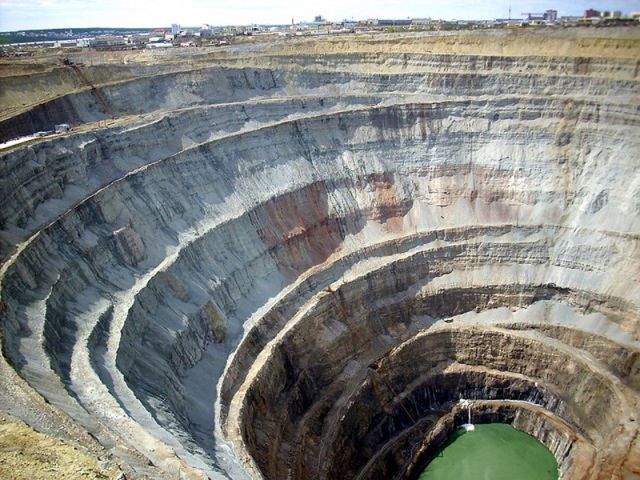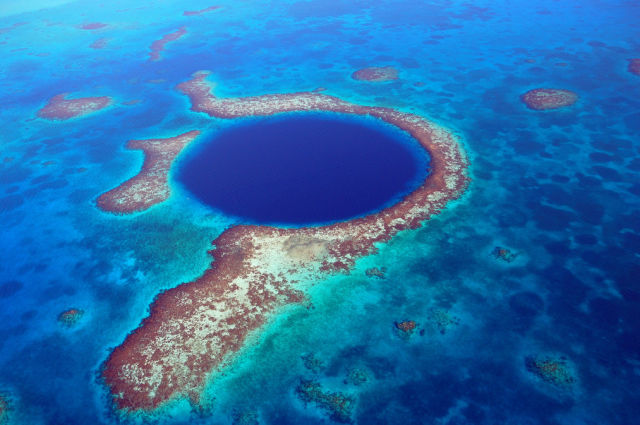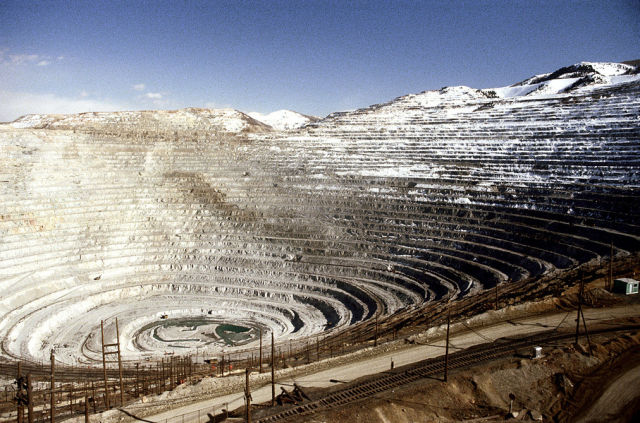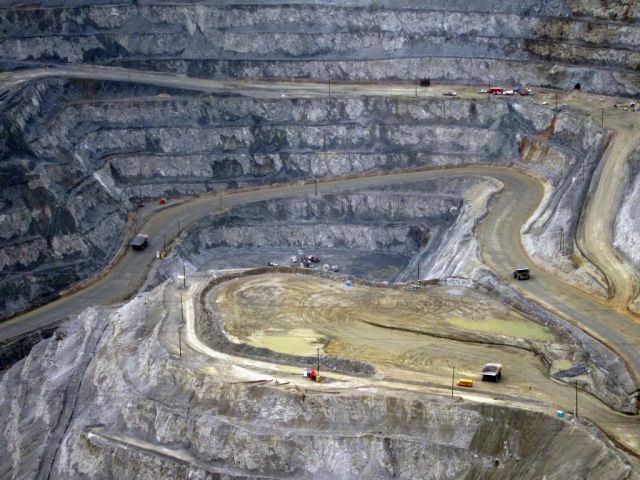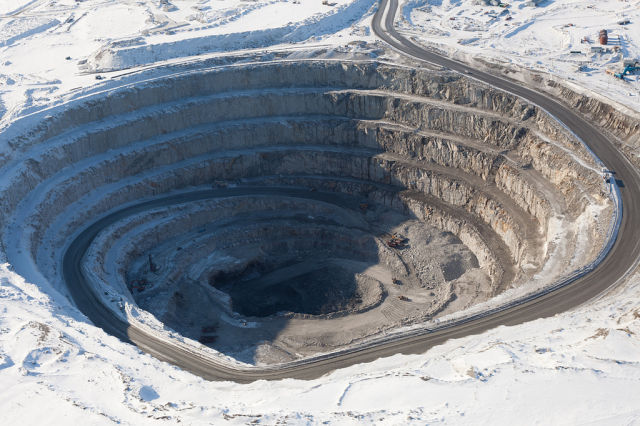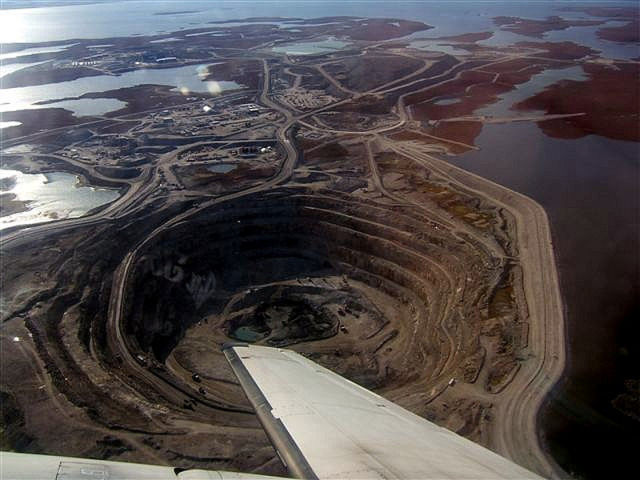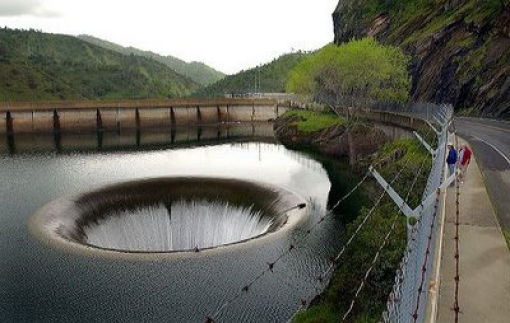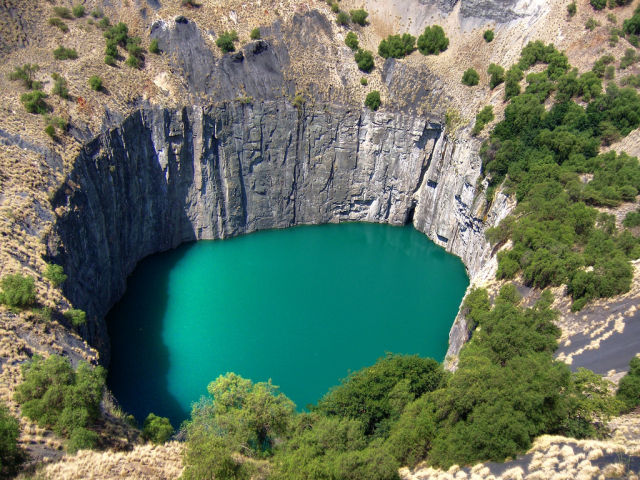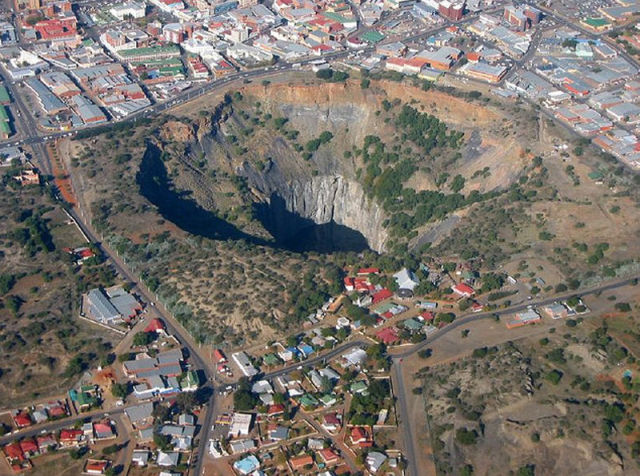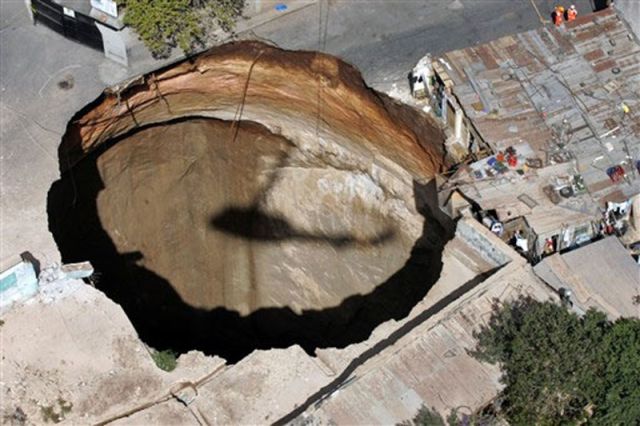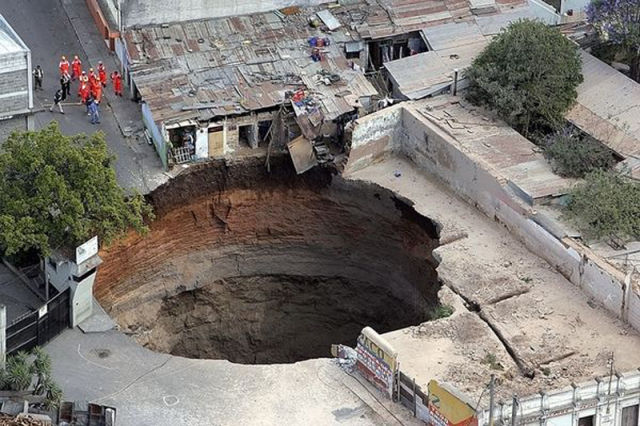Mir Mine
An open pit diamond mine located in Mirny, Eastern Siberia, Russia. The mine is 525 meters (1,722 ft) deep (4th in the world) and has a diameter of 1,200 m (3,900 ft), and is the second largest excavated hole in the world.
The Great Blue Hole
A large underwater sinkhole off the coast of Belize.The hole is circular in shape, over 300 metres (984 ft) across and 124 metres (407 ft) deep.
The Bingham Canyon Mine
The Bingham Canyon Mine, also known as the Kennecott Copper Mine, is an open-pit mining operation extracting a large porphyry copper deposit southwest of Salt Lake City, Utah, USA, in the Oquirrh Mountains. It is the deepest open-pit mine in the world.It is over 0.75 miles (1.2 km) deep, 2.5 miles (4 km) wide, and covering 1,900 acres (7.7 km²).
The Diavik Diamond Mine
A diamond mine in the North Slave Region of the Northwest Territories, Canada.
It is connected by an ice road and Diavik Airport with a 5,235-foot (1,596 m) gravel runway regularly accommodating Boeing 737 jet aircraft.
The mine consists of three kimberlite pipes associated with the Lac de Gras kimberlite field and is located on an island 20 square kilometres (8 sq mi) in Lac de Gras and is informally called East Island. It is about 220 kilometres (137 mi) south of the Arctic Circle.
Monticello Dam
A dam in Napa County, California, United States constructed between 1953 and 1957. It is a medium concrete-arch dam with a structural height of 304 ft (93 m) and a crest length of 1,023 ft (312 m).
The dam is noted for its classic, uncontrolled spillway with a rate of 2,580 cubic feet per second, at a water surface elevation of 455.5 feet. The diameter at the lip of 72 ft (22 m). Locally, the spillway is also known as 'The Glory Hole'.
The Big Hole or Kimberley Mine
An open-pit and underground mine in Kimberley, South Africa, and claimed to be the largest hole excavated by hand.From mid-July 1871 to 1914 up to 50,000 miners dug the hole with picks and shovels, yielding 2,720 kilograms (6,000 lb) of diamonds. The Big Hole has a surface of 17 hectares (42 acres) and is 463 metres (1,519 ft) wide.
Add/Edit text here
It was excavated to a depth of 240 metres (790 ft), but then partially infilled with debris reducing its depth to about 215 metres (705 ft). Since then it has accumulated about 40 metres (130 ft) of water, leaving 175 metres (574 ft) of the hole visible.
Piping Pseudokarst in Guatemala
In May 2010, another piping feature, which was larger than a street intersection, developed after Tropical Storm Agatha. It engulfed a three story building and a house. This 2010 piping feature is at least 18 m (60 ft) wide and 60 m (200 ft) deep.

